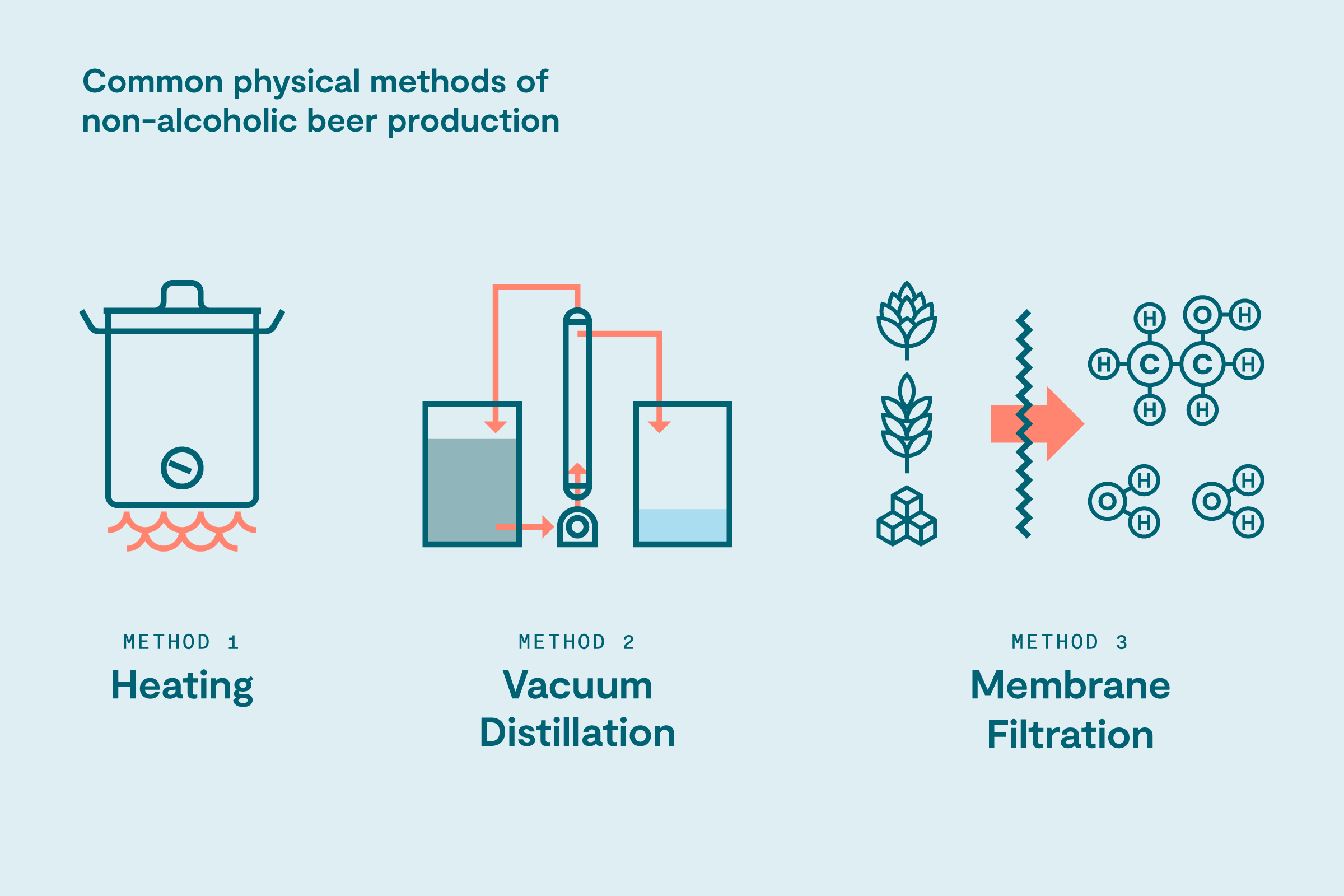Low- and No-Alcohol Beers: A Primer
An introduction to the topic and an overview of some methods of production
Jan 3, 2023
Introduction
Non-alcoholic and low-alcohol beer (shortened to NABLAB in some circles — we’ll stick to NA and low-ABV beer here) is nothing new, even if their prevalence may feel more intense in recent years. Here in the United States, we can trace NA beer back to Prohibition days, when the 18th Amendment banned booze altogether and Congress later enforced the prohibition of any beverage with an alcohol content higher than 0.5% ABV, as defined by the Volstead Act.
Naturally, most alcohol manufacturers were in big trouble once the Volstead Act went into effect, so many brewers pivoted to creating incredibly low-alcohol beers, often referred to as “near beers.” Very few breweries were able to operate under these conditions, but those who did were lucky enough — and savvy enough — to survive the duration of Prohibition and eventually return to producing full-strength beers.
Since then we’ve seen tremendous growth in the beer industry with nearly 10,000 breweries operating in the US today, the largest of which have continued to produce low- or no-proof brands of large-scale pale lagers. However, a renewed interest in NA beers as well as an overwhelming demand for more style choices has initiated a new wave of small producers coming out with their own non-alcoholic craft beers.
How these beers are made
There are a number of ways to make non-alcoholic beer, all with their own advantages. Physical methods of producing non-alcoholic beer rely on removing ethanol from a finished product, while biological methods prevent significant ethanol content from forming in the first place. The most common physical methods rely on thermal processes or filtration to create a product almost entirely stripped of ethanol. Even today, the most common methods for creating low- and no-proof beer tend to be cost-prohibitive except for the largest producers.
Heating: beer is brought to just below boiling point in order to remove alcohol. This method can damage the beer’s flavor through prolonged heat exposure.
Vacuum distillation: Beer is placed in a vacuum chamber designed to lower its boiling point to allow for alcohol evaporation with reduced damage to the beer.
Membrane filtration: Beer is run through a semipermeable membrane at high pressure, filtering out water and alcohol, all while leaving behind a concentration of malt- and hop-derived flavors. The concentrate is then diluted back to the original “beer” strength with deaerated water and carbonated, while the filtered-out portion (filtrate) is sometimes distilled to recover water.
As we continue this series, we’ll get into biological methods (rather than physical methods ) of NA beer production. We’ll examine styles we consider to be well-suited for low/no alcohol content, recipe design, yeast selection, and blending opportunities.
As microbiologists, we can’t go without mentioning the food safety concerns that come along with NA beer. Ethanol content, IBUs, and low pH — all hallmarks of standard beer — are what has made beer safe to drink since before the advent of reliably potable water. E. Coli, Listeria, and Salmonella all have the potential to thrive in the absence of those safeguards. In order to create a safely drinkable non-alcoholic beer, it’s important to consider the impact of an alcohol-free environment. Some researchers have suggested limiting NA beer sales to small package (bottles, cans) or short-draw draft dispense to reduce the amount of time these beers spend in draft lines. Others strongly recommend pasteurization of all NA beers in order to eliminate the possibility of any additional fermentation in the package or make people sick.
Related Collections




